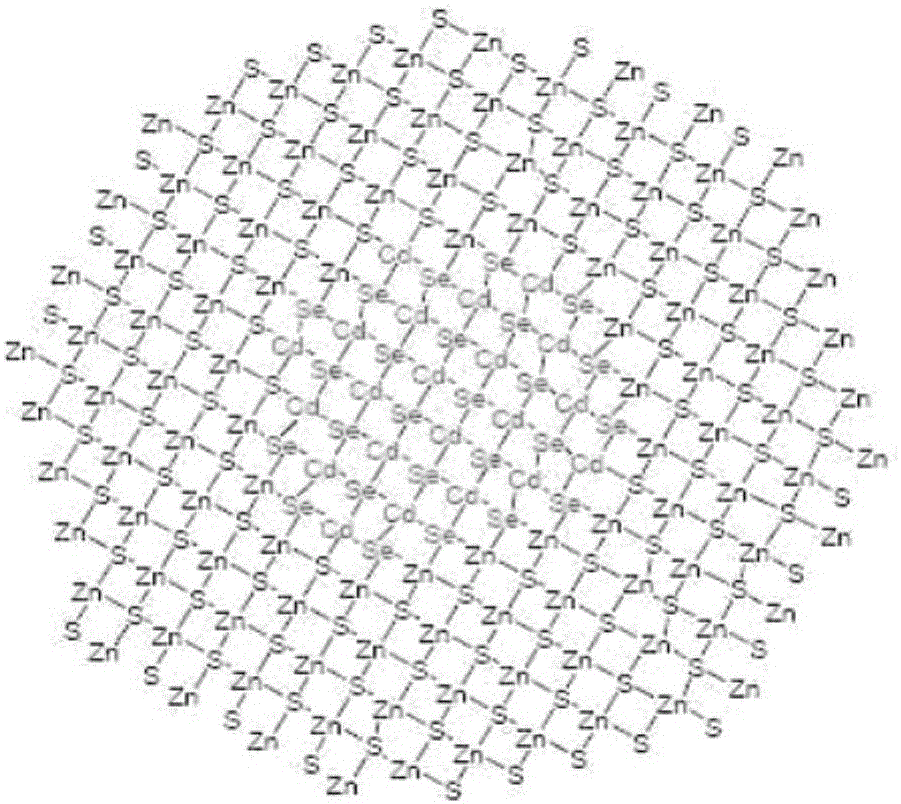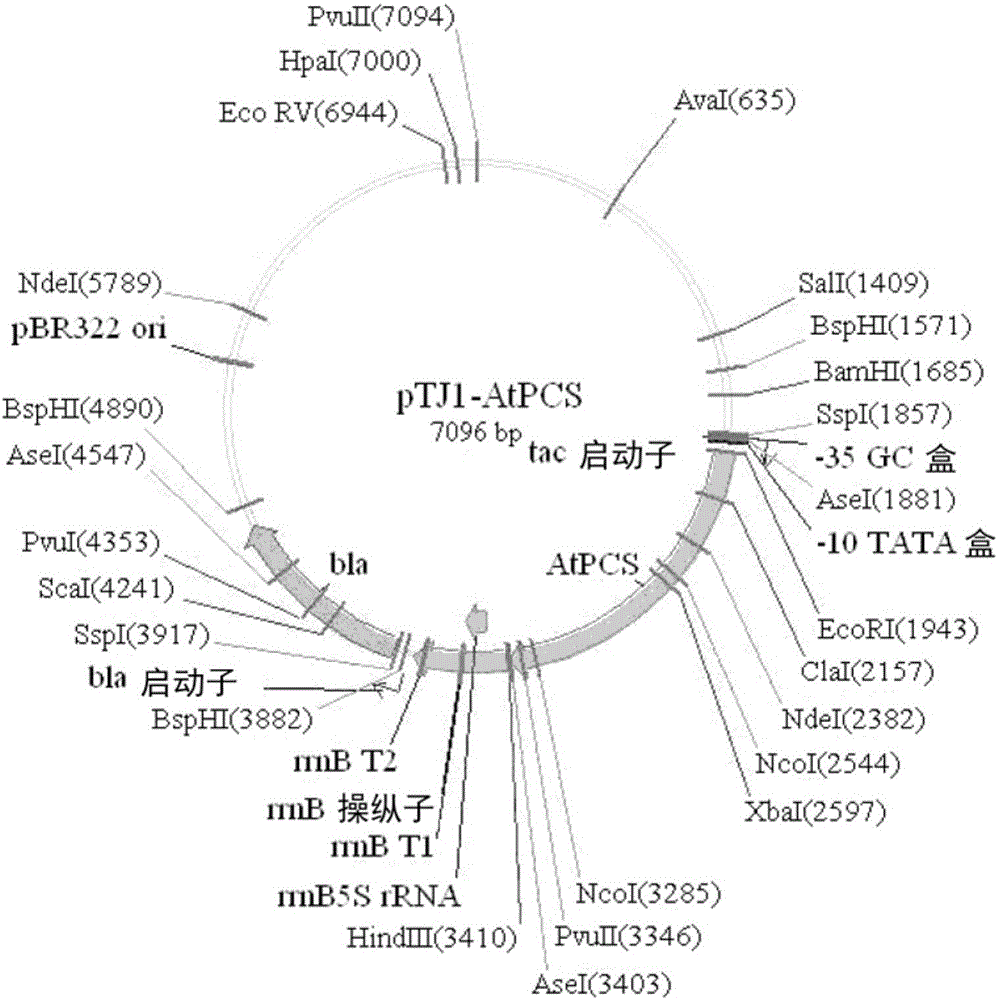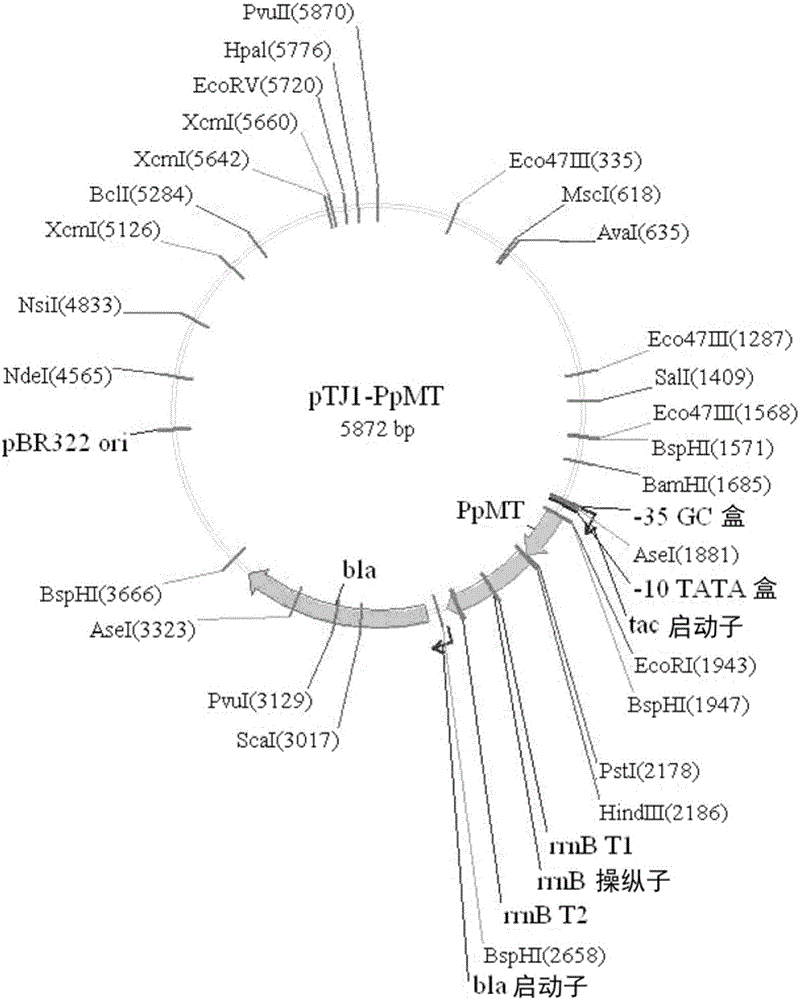Method for preparing metal nanoparticle using metal binding protein
A nanoparticle and protein-binding technology, applied in the direction of metallothionein, microbial-based methods, botany equipment and methods, etc., can solve the problem of low penetration of optical imaging
- Summary
- Abstract
- Description
- Claims
- Application Information
AI Technical Summary
Problems solved by technology
Method used
Image
Examples
Embodiment 1
[0051] Example 1: Preparation of heavy metal binding protein expression vector
[0052] (1) Preparation of plant chelating peptide synthase expression vector
[0053] In order to obtain the AtPCS gene of synthetic plant chelating peptide synthetase (NCBI accession number AF461180), the Arabidopsis complementary DNA (cDNA) represented by the sequence of base SEQ ID NO: 5 (Arabidopsis plant chelating peptide synthetase) was used As a template, PCR was performed using the primers of SEQ ID NO: 1 and SEQ ID NO: 2. The PCR reaction was performed under the following conditions: pre-denaturation at 94°C for 7 min; denaturation at 94°C for 1 min and 30 cycles; annealing at 55°C for 1 min; extension at 72°C for 1 min; and finally at 72°C for 7 min.
[0054] SEQIDNO:1: 5'-GGAATTCATGGCTATGGCGAGTTTAT-3'
[0055] SEQIDNO:2: 5'-CCCAAGCTTATTAATAGGCAGGAGCAGCGAG-3'
[0056] The 1.5-kb DNA fragment obtained by PCR reaction was separated by agarose gel electrophoresis, and digested with two restriction...
Embodiment 2
[0063] Example 2: Fluorescence analysis of E. coli expressing recombinant plasmid pTJ1-AtPCS
[0064] The plant chelating peptide synthetase was prepared by culturing E.coliDH5α with the transformed recombinant plasmid pTJ1-AtPCSd with a strong inducible tac promoter. For this purpose, the transformed E. coli was inoculated in a 500 mL shake flask containing 100 mL LB liquid medium, which contained heavy metal ions (5mMCdCl 2 ·2.5H 2 O, ZnCl 2 , SeO 2 , TeCL 4 And CsCl 2 ) And incubate at 37°C. The pTJ1-AtPCS recombinant plasmid has a tac promoter, and IPTG is added to induce gene expression. To this end, the culture medium was detected with a spectrophotometer at a wavelength of 600 nm, and when its optical density reached 0.6, 1 mM IPTG was added to induce gene expression. After 4 hours of induction of expression, the medium was centrifuged at 4°C and 6000 rpm for 5 min. Then, the supernatant was discarded, the pellet was washed once with 10 mL PBS buffer (pH 7.4), centrifug...
Embodiment 3
[0066] Example 3: In vivo heavy gold synthesized in E. coli expressing recombinant plasmid pTJ1-AtPCS Genus characteristics
[0067] In order to confirm whether the plant chelating peptide synthetase expressed by IPTG can produce heavy metal structures in E.coliDH5α transformed with the recombinant plasmid pTJ1-AtPCS with inducible tac promoter, the E.coli in Example 2 was washed with distilled water It was dried in a freeze dryer under vacuum for one day, and the heavy metals accumulated in the cells were analyzed by TEM (TehnaiG2, FEI, Netherlands). As a result, it was found that the size and shape of the heavy metal structure were consistent ( Image 6 ). In addition, it can be observed that the heavy metal structure that does not appear in the control group (a) that does not express the plant chelating peptide synthase appears in the E. coli expressing the plant chelating peptide synthetase (b) ( Image 6 b, 6c and 6d).
[0068] The scale bars in the figure can be used to de...
PUM
| Property | Measurement | Unit |
|---|---|---|
| diameter | aaaaa | aaaaa |
| size | aaaaa | aaaaa |
Abstract
Description
Claims
Application Information
 Login to View More
Login to View More - R&D
- Intellectual Property
- Life Sciences
- Materials
- Tech Scout
- Unparalleled Data Quality
- Higher Quality Content
- 60% Fewer Hallucinations
Browse by: Latest US Patents, China's latest patents, Technical Efficacy Thesaurus, Application Domain, Technology Topic, Popular Technical Reports.
© 2025 PatSnap. All rights reserved.Legal|Privacy policy|Modern Slavery Act Transparency Statement|Sitemap|About US| Contact US: help@patsnap.com



